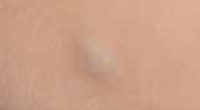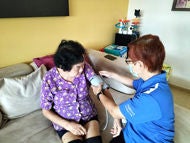What is - Common Lumps and Bumps in Children
They present as a single or multiple yellow-tan lump often on the arms, neck or trunk. It may be itchy or have no symptoms at all.
The surface of the lump often has a wrinkled "orange-peel" like appearance and may uncommonly blister. Rubbing the lump may cause it to turn red and swell up, resembling an insect bite.

JUVENILE XANTHOGRANULOMA (JXG):
Juvenile xanthogranuloma (JXG) is an uncommon skin lump occurring mainly in infants and young children.
It is caused by an excess of a type of cell found in the skin known as histiocytes and is benign.
JXG presents as a firm, round lump in the skin with an orange to yellow colour. They may initially appear reddish.
These usually occur in the head, neck or upper body region as a single lump but sometimes some patients may have multiple JXG.
JXG are usually not itchy or painful.
Rarely, JXG may be found outside the skin in other areas including the eyes, muscles or liver.
Patients with many JXG may rarely have an increased risk of a type of childhood leukaemia and may need to be regularly monitored.

PILOMATRICOMA:
A pilomatricoma is a benign growth arising from cells forming the hair follicle.
It presents as a firm-to-hard, flesh-coloured or bluish lump, usually on the head, neck or upper limbs.
A pilomatricoma usually does not cause any symptoms but it may become red and painful if it becomes inflamed or infected. It may be painful on direct pressure.

Diagnosis of Common Lumps and Bumps in Children
Treatment for Common Lumps and Bumps in Children
Oral antihistamines can be taken to control symptoms of itch.
JUVENILE XANTHOGRANULOMA:
JXG usually disappears by itself over a few years and can be left alone if it does not bother the child.
If causing symptoms, JXG may be surgically excised, leaving a small scar.
PILOMATRICOMA:
Pilomatricomas do not usually disappear with time and will either remain the same size or grow slowly.
A small surgery (punch or excision biopsy) may be performed to completely remove the pilomatricoma. It does not usually recur after being removed.
The information provided is not intended as medical advice. Terms of use. Information provided by SingHealth.
Our Medical Specialists
Get to know our doctors at SingHealth Hospitals in Singapore.
Get to know our doctors at SingHealth Hospitals in Singapore. here.
Our Medical Specialists
1
2
3
4
5
Health Articles




















